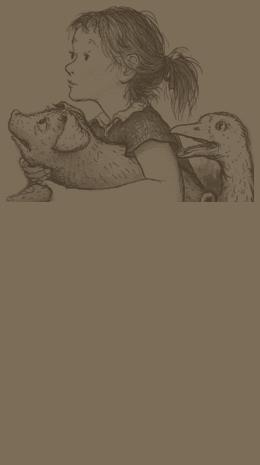
60 Years of Charlotte: E.B. White’s Enduring Classic
Elwyn Brooks “E. B.” White (1899-1985), Cornell ’21, was an essayist, humorist and poet, well known for his contributions to The New Yorker and Harper’s Magazine, as well as for being co-author/editor of the best-selling writing guide The Elements of Style. But his most beloved work is a children’s story featuring an unlikely friendship between a pig and a spider. Charlotte’s Web is often cited as one of the best American children’s books of the 20th century. This year marks the 60th anniversary of its publication, and it remains one of the best-selling children’s books of all time.
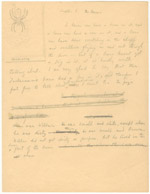 |
E.B. White. Charlotte’s Web. Early manuscript draft (pages 1 and 2), circa 1949-1950. [zoom] Additional images: 
White did a great deal of research on the anatomy and behavior of spiders, and even sent books on the subject to illustrator Garth Williams to ensure that Charlotte would look like an actual Araneus cavaticus (barn spider). Here he sketched an image of Charlotte above an early draft of the first chapter. He modeled his sketch of “Zuckerman’s Barn” after his own farm in Brooklin, Maine, which he and his wife Katharine had purchased in 1933. |
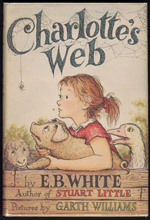 |
E.B. White. Charlotte’s Web. First edition. New York: Harper, 1952. [zoom] |
 |
E.B. White at his New Yorker office with his dachshund Minnie. Photograph, circa 1950. [zoom] |
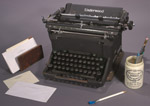 |
E.B. White’s Underwood typewriter, circa 1942. [zoom] |
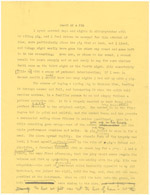 |
E.B. White. “Death of a Pig.” Manuscript (page 1) of an essay for The Atlantic, circa 1947. [zoom] Many readers suspect that the event described in this essay - the illness and death of a pig White was raising for slaughter, and the ironic attachment to it that he developed as he tried to nurse it back to health - provided an inspiration for Charlotte’s Web. Although White denied any direct connection, he did cite his conflicting feelings on the general practice of raising livestock to be “murdered by their benefactors” as a possible catalyst:
|